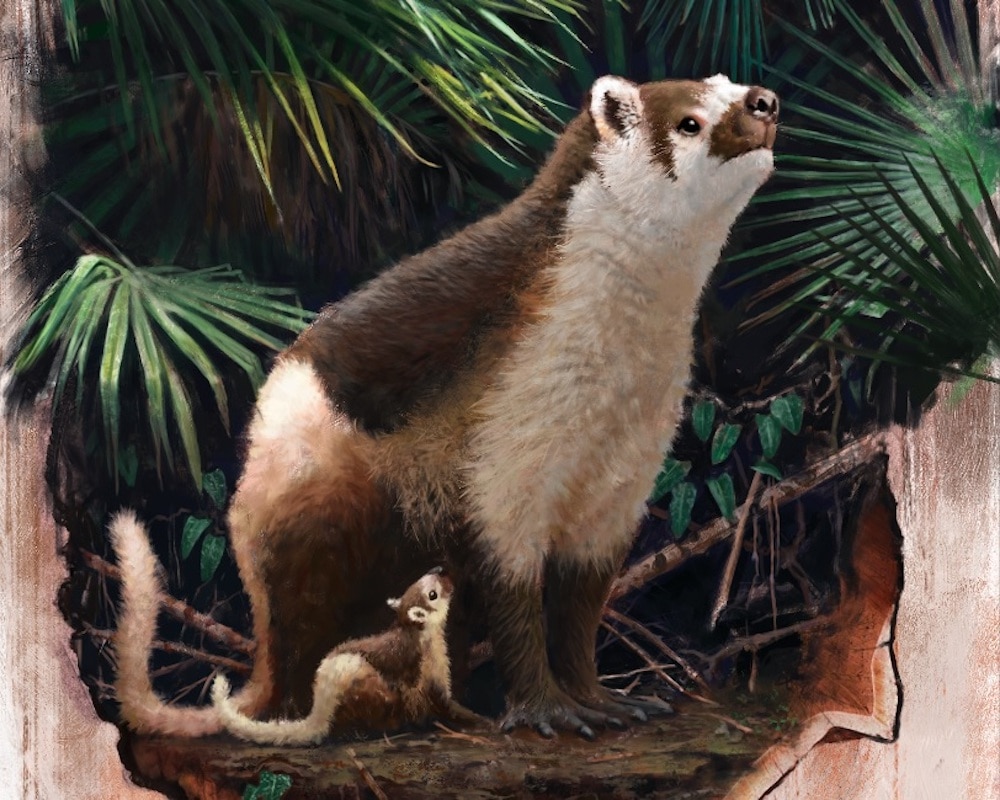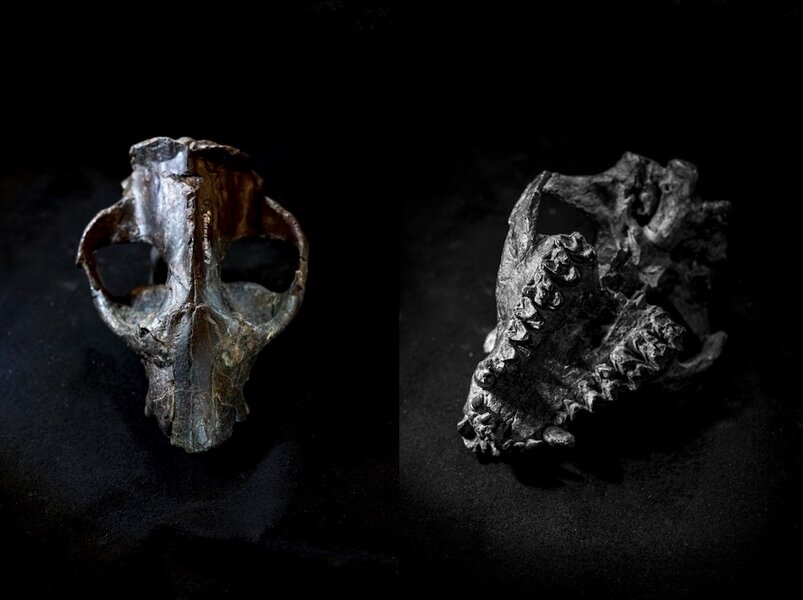Create a free profile to get unlimited access to exclusive videos, sweepstakes, and more!
'ManBearPig' was real, and its fast lifestyle may have helped mammals thrive
In the race of life, it helps to go fast.

In 2001, no one would have expected that The Fast and the Furious (now streaming on Peacock!) would spawn a whirling, interconnected, film universe which is still going strong more than two decades later. Sometimes in Hollywood, just like on the streets of L.A., the secret to sticking around for a long time is going really fast over a short distance.
That strategy apparently works just as well for nascent species hoping to capitalize on recently vacated evolutionary real estate. A little more than 60 million years ago, some mammals took that philosophy to heart. They lived fast and furious, and they died young, but their accelerated lifespan may have contributed to the overall success of mammals in the wake of the dinosaurs’ death.
One particular species, known as Pantolambda bathmodon, lived an especially short lifespan. The broad strokes of its day-to-day life were recently laid bare, thanks to a combination of paleontology and modern technology. Gregory Funston from the Department of Natural History at the Royal Ontario Museum, and colleagues, looked to the teeth of Pantolambda and found a record of their entire lives, spanning from shortly after conception to the day they died. The results were published in the journal Nature.
“In the Mesozoic, mammals never really got much larger than a cat. The moment the dinosaurs go extinct, within maybe five million years, mammals reach 100 kilos. We didn’t understand why that was and that’s how the project started,” Funston told SYFY WIRE.
The process happened relatively quickly on evolutionary timescales, with Pantolambda reaching 45 kilos by 62 million years ago. In doing so, they acquired a sort of mishmash of characteristics which makes them unusual when compared with modern mammals.
“In some ways they looked a bit like an ungulate. A horse or a deer. In other ways they would have looked like a pig because they had big, robust torsos. However, they had a short face with small ears much like a bear. They also had five-fingered hands like a human,” Funston said.
The unique collection of features has resulted in some researchers jokingly referring to Pantolambda as "ManBearPig," though Funston notes it wouldn’t have actually looked like the famed South Park character. All joking aside, scientists wanted to understand how Pantolambda and animals like it managed to get so large so quickly and scoop up the niches freshly left over from the dinosaurs. The growth patterns in the teeth turned out to be the key to unlocking the mystery.
“As our teeth and bones grow, they reflect what’s happening in our body. We have a 24-hour rhythm, a circadian rhythm, it’s why we get sleepy at night and wake up in the morning. That cycle also has an effect on the cells that grow our bodies,” Funston said.
The teeth have specialized cells which secrete the tissues that make up the teeth. Those cells follow the same rhythm as the rest of the body and exhibit daily growth pulses. If you can look at the teeth with high enough fidelity, you can see the pulses in the teeth. They’re like growth rings on a tree, but instead of showing the years, they reveal each individual day of an animal’s life, at least as long as the teeth were present.
In addition to showing the day over day growth pulses, the patterns in the teeth also revealed major developmental events which helped scientists to lay out the life cycle of Pantolambda. Those events correspond to drastic changes in the trace elements being stored in the teeth and bones.
“We scanned the teeth and found things like zinc corresponding to birth. That’s because mothers produce this special kind of milk called colostrum that’s really high in zinc and it’s only produced for a couple of days after birth. Also, when you’re born, it really disrupts your system, and your teeth stop growing for a little bit. It leaves this distinct gap which we call the birth line,” Funston said.
Finding that line allowed scientists to see the duration of tooth growth from the moment they first developed up until birth, providing a window into the gestation period of an animal 62 million years in the past. A second line corresponds to the cessation of nursing and the transition to solid foods. From those lines, coupled with the daily growth patterns, scientists were able to determine that Pantolambda gestated for about 7 months, nursed for only about two months, was fully adult by about one year, and lived for a handful of years after that if they were lucky.
“We found that most individuals lived about three to four years before they died. We had some individuals who lived about 11 years. That was a bit of a surprise. If you look at similar sized animals today, they tend to live quite a bit longer. Pantolambda has about half the expected lifespan of an animal that size today,” Funston said.
That may have been a key part of their survival strategy. Long gestation followed by a short nursing period allowed Pantolambda to pop out offspring which were capable of fending for themselves very quickly. The short lifespan meant that they reproduced rapidly after birth. Large size at birth coupled with quick generational overturn meant they could level up their body size relatively quickly.
In the race of life, an individual Pantolambda wasn’t on the track very long, but it pressed its foot to the floor. Eventually, those quick bursts stacked up and might be part of the reason we are here today to dig them up, look incredibly closely at what they left behind, and uncover secrets trapped in the dirt.



























